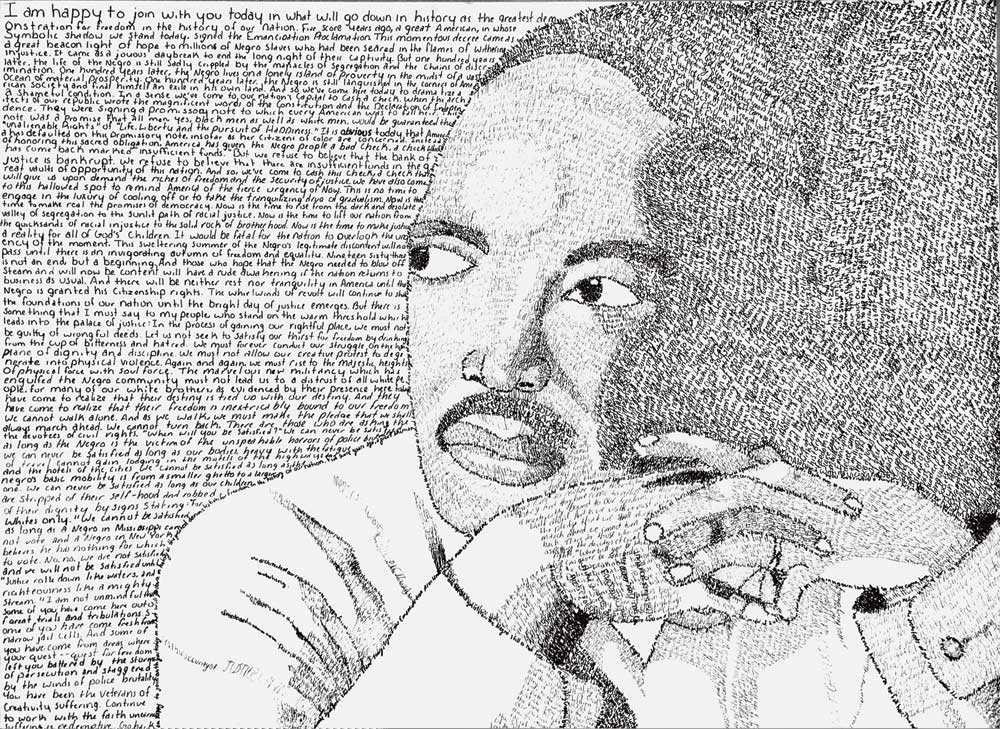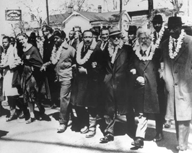Fifty years ago this month, on June 27, 1958, Martin Luther King Jr. addressed Friends who gathered in Cape May, New Jersey, at Friends General Conference. The speech, "Nonviolence and Racial Justice" (p. 6), presented here in full for the first time, reveals the full depth of thought and clarity of expression that mesmerized so many and helped King become the focal point of a movement of national redemption. In the parts that have not appeared before, the words reveal a warm affection between King and the Religious Society of Friends. Quakers, overwhelmingly white at the time, still had much unfinished business in ridding ourselves of prejudice and discrimination, but this was a moment to celebrate a common vision and a readiness to work together to fulfill it.
Two articles in this issue amplify the message of King and nonviolence. In "The Power of Fearful Faithfulness: Martin Luther King Jr.’s Legacy for Friends" (p. 12),
Steve Chase looks at what made King a great leader. In addition to his inborn gifts, and the richness of moral teaching that he received from his family and early acquaintances, King was challenged by one of his associates at one particular moment to step out in front. The story is significant for all of us because it reminds us that even if we don’t feel like leaders, we can act as such when events require it. And in "Fifty-Second Street" (p. 16), George Lakey recounts finding within himself, in an encounter on a street late at night, the strength to apply a nonviolent method he had recently been taught.
In the next article, "Quakers and Reparations for Slavery and Jim Crow" (p. 18), Jeff Hitchcock looks squarely and thoughtfully at a lingering issue in bringing about healing across the racial divide in the United States. In a year when a white woman and a black man are leading in races in the Presidential campaign—suggesting that our politics are at last moving beyond stereotypes—this article challenges us to pause and reflect on how we might fully atone for past injustices and their long reach into the present.
Finally, in "The Divine Palette" (p. 23), C.T. Bratis rounds out this issue by bringing us back to a joyful place in our brilliant natural setting.
We are glad to announce the appointment of Friends Journal‘s new volunteer book review editor, Diana White, and an assistant book review editor, Eileen Redden. Diana, a member of Farmington (Maine) Meeting, brings a background in education and healthcare—she teaches nursing at the Université du Maine à Fort Kent, the only French-English university in the U.S. She lives in far northern Maine where the closest meeting is 120 miles away. She writes: "Reading Friends Journal has become more important to me now that I do not worship with other Friends on a regular basis. As book review editor, I can be meaningfully involved with Friends and contribute to the life in the Spirit that is working amongst Friends." Eileen, much closer to Friends Journal’s office geographically, is a member of Camden (Del.) Meeting and attends Cadbury at Lewes (Del.) Worship Group. She comes to us with a background in public education and school counseling, from which she retired last year. Diana and Eileen have been valued additions to our far-flung volunteer staff since April.



